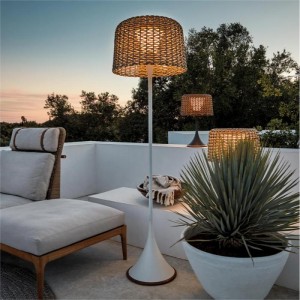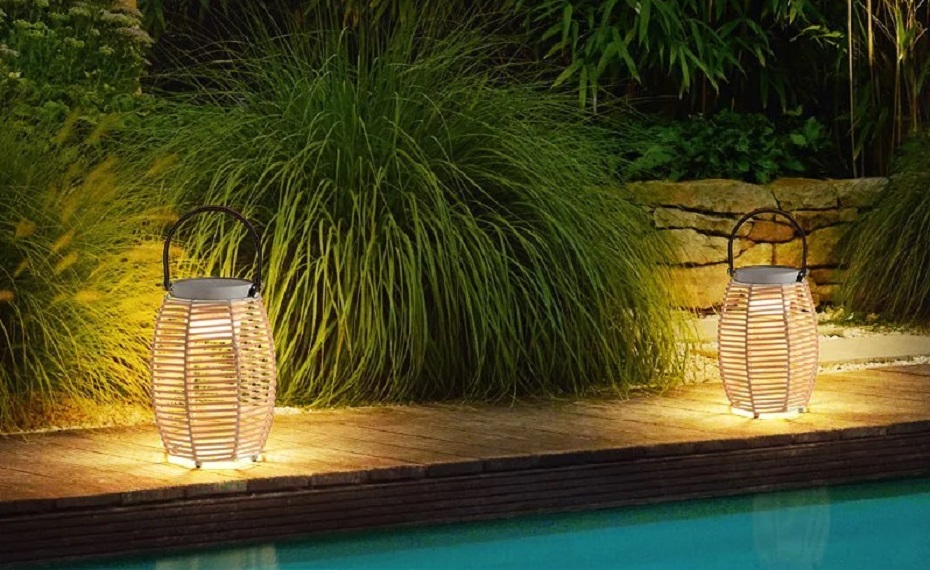Choosing the right garden lighting solution for a large project can not only improve the overall aesthetics and safety of the site, but also reduce long-term operating costs through energy-saving design and efficient maintenance.
This article will explore how to design and select efficient garden lighting solutions for large projects to ensure that the lighting system meets functional requirements while taking into account environmental protection, cost-effectiveness and aesthetic effects.
1. Before choosing a suitable garden light solution, you must first conduct a detailed analysis of the lighting needs of the project.
1.1 Project size and layout
The size of the project directly affects the design and selection of lighting. Larger projects, such as residential areas, commercial parks, or public facilities, usually need to comprehensively consider the lighting needs of different areas, such as road lighting, landscape lighting, security lighting, and functional lighting. For these different lighting needs, a combination of various types of garden lights can be used to achieve the best lighting effect.
1.2 Lighting purpose and priority
Whether the main purpose of lighting is beauty or function needs to be clarified when choosing lamps. For example, for landscape lighting, the color, brightness, and direction of the light should be coordinated with the landscape elements; while security lighting prioritizes brightness and coverage to ensure the safety of night activities.
2. Key criteria for determining efficient garden lights
2.1 Energy saving and environmental protection
Energy saving is one of the important criteria when choosing garden lighting solutions. With the trend of green buildings and sustainable development, energy-efficient lamps are becoming more and more popular. LED garden lights are ideal for large-scale projects due to their high efficiency, low energy consumption and long life. The energy consumption of LED lamps is more than 50% lower than that of traditional light sources, which can significantly reduce the energy consumption of large-scale projects.
2.2 Lifespan and maintenance cost
Garden lights with long life and low maintenance cost are essential for large-scale projects. Regular maintenance and replacement of lamps will incur additional operating costs, so choosing lamps with longer life and low failure rate is the key to achieving long-term cost-effectiveness. For example, the service life of LED lamps can reach more than 50000 hours, far exceeding traditional lamps, which makes them more advantageous in large-area lighting projects.
2.3 Protection level of lamps
Outdoor environmental conditions are complex, and lamps need to have good waterproof, dustproof and corrosion resistance. According to the international protection level standard (IP level), garden lamps in large projects usually need to reach IP65 or above protection level to ensure their normal operation under various adverse weather conditions.
2.4 Lighting effect and light distribution
Whether the light distribution of garden lamps is uniform and whether the brightness meets the requirements is an important consideration in lighting design. For large-area projects, choosing lamps with wide-angle distribution and glare-free design can avoid unnecessary light waste and improve the comfort and functionality of lighting. Reasonable light distribution not only improves the visual experience of the environment, but also saves energy.
3. Consider intelligent control and automation
As technology develops, intelligent lighting systems are increasingly used in large projects. Intelligent garden lights can automatically adjust according to ambient light, activity frequency or time, reducing unnecessary energy consumption and extending the life of lamps.
Garden lights with light sensors and motion sensors can automatically adjust brightness according to changes in the surrounding environment. For example, when there is sufficient light, the lamp will automatically reduce the brightness; when someone passes by, the light will automatically increase, saving energy and improving safety.
4. Choice of materials and design
4.1 Durability of lamp materials
For large projects, the durability of lamp materials is crucial. High-quality materials such as aluminum alloy and stainless steel not only have good weather resistance, but also resist corrosion, and are especially suitable for lamps that are exposed to humid or windy environments for a long time. Although plastic lamps are light, they may be inferior in durability.
4.2 Design style and environment integration
In addition to functionality, the design style of garden lights should be consistent with the overall landscape design and architectural style of the project. Different projects, such as commercial parks, residential communities or resorts, have different requirements for the appearance design of lamps. For example, modern minimalist style lamps are suitable for high-end business places, while retro style lamps are more suitable for the lighting needs of historical and cultural buildings.
For large-scale projects, it is particularly important to choose a reliable garden light supplier. A high-quality supplier can not only provide high-quality products that meet the needs of the project, but also provide one-stop services from design, installation to after-sales maintenance. Especially after-sales service, including maintenance, warranty, replacement, etc. of lamps, can ensure that the project avoids unnecessary troubles in long-term use.
Recommend Reading
Post time: Sep-15-2024










